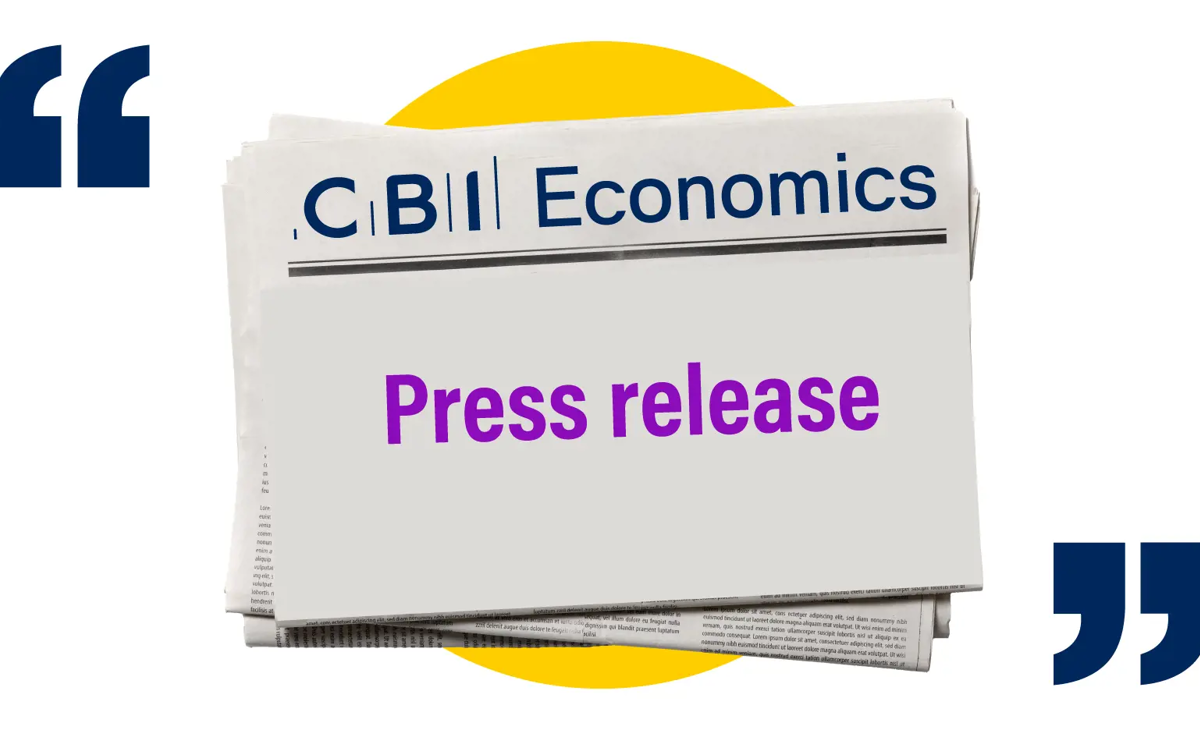The UK economy is facing considerable domestic and international headwinds that are set to weigh on growth prospects this year and into next, according to the Confederation of British Industry’s latest Economic Forecast published today (Wednesday 18 June).
While the economy began 2025 on a strong note, our surveys suggest that underlying activity remains sluggish due to persistently weak demand and gloomy sentiment. Higher employment costs following the Autumn Budget are feeding into decisions around pricing, capital expenditures, and hiring, while higher US tariffs are set to create headwinds for exports and investment.
Activity is expected to gradually strengthen on a quarterly basis over 2026, as household spending is supported by real incomes growth, lower interest rates, and easing inflation. However, elevated labour costs and global economic uncertainty will weigh on business investment.
The CBI’s latest UK Economic Forecast shows that:
- UK GDP growth in 2025 is projected to be 1.2% – a downgrade from our December forecast of 1.6%.
- Growth in 2026 is projected to be 1.0% – also down on our December forecast of 1.5%.
- Higher employment costs are hitting hiring and business investment plans, and are also expected to push up prices, reduce margins, and weigh on pay growth.
- Business investment is expected to be weak, reflecting the impact of higher labour costs and global uncertainty.
- US tariffs hikes pose a modest headwind to UK output, primarily through reduced exports, dampened investment, and financial market volatility.
- But in 2026, the economy will gradually improve quarter by quarter, helped by rising consumer spending on the back of recent real income gains, lower interest rates, and falling inflation.
Louise Hellem, Chief Economist, CBI, said:
“Our latest Economic Forecast underlines the challenges facing businesses and the wider economy as they’re buffeted by domestic and global headwinds. The unpredictable global outlook combined with rising employment costs, gloomy business sentiment, and subdued investment intentions means it’s more important than ever that government pulls all the levers it can to set the UK on a path to sustainable growth.
“The Spending Review signalled a downpayment on hardwiring the growth mission into government priorities, with targeted investment that will raise the long-term ceiling of the economy. But we know that the innovation, investment, and jobs necessary for growth will come from business, not Whitehall, and that government must work with business to create the right conditions to help shift the economy out of low gear.
“With GDP set to remain modest in 2026, there is an important opportunity for the government to fire up the growth agenda in the forthcoming Industrial Strategy. With the cumulative burden of increased costs being felt by firms across the economy, it is vital the Industrial Strategy helps drive a thriving environment for all businesses. A missing part remains a joined-up people strategy to make sure our industries have the skills and the labour needed to go after growth opportunities. Unlocking investment through a comprehensive skills strategy, funding the Growth & Skills levy, tackling high energy costs for UK firms, and setting out a national strategy on tech adoption could help to establish a reinvigorated partnership model for effective collaboration between both government and business.”
The Economic Forecast in detail shows
- Higher employment costs weigh on businessThe increase in employer National Insurance contributions, reduction in secondary threshold, and rise in National Living Wage in April 2025 have significantly increased firms’ labour costs, especially in sectors like hospitality and retail. This has contributed to weaker hiring and investment plans, and is expected to raise prices, reduce profit margins, and dampen pay growth. These effects are expected to result in higher inflation and slower growth in business investment and employment over our forecast.
- Business investment to be held back by higher labour costs and global uncertainty
CBI surveys suggest that investment intentions have deteriorated significantly since the Autumn Budget and point to a noticeably gloomier picture for investment compared with official data. In Q2 2025, firms reported that they expected to reduce capital spending over the next 12 months (compared to the last 12 months) to the greatest extent in nearly five years. There is projected to be growth in business investment in 2025, but that is mainly due to a sharp rise in Q1 that was boosted by temporary factors (like aircraft purchases). Investment growth will subsequently slow due to high employment costs and global economic uncertainty. - Higher tariffs pose a limited headwind to UK activityHigher US tariffs are expected to reduce US demand and hit global trade more broadly. The direct impact on the UK will be limited by the fact that goods exports to the US account for around 7% of total exports, but US tariffs are still likely to weigh on UK activity by affecting business investment and exports.
- Consumption gradually picks up as cautious spending behaviour eases next yearConsumer spending is expected to increase modestly on the back of rising real incomes, lower interest rates, and falling inflation – but a weaker jobs market will weigh on consumption. This year, households are likely to remain cautious with their spending, but that should ease in 2026 as inflation falls below 3%. Households are expected to start to dip into some of the savings that they’ve built up over the past couple of years, reflecting slower incomes growth and reduced interest rates.
- Inflation remains over 3% in 2025 before slowing back down next yearInflation is expected to stay above 3% through the rest of 2025, mainly due to higher energy costs and regulated prices like water bills. In 2026, inflation should ease to around 2.5% as these earlier increases drop out of the yearly comparison. However, higher labour costs after the Autumn Budget will keep putting some upward pressure on prices, especially in sectors like hospitality and retail.
- Labour market softens as higher employment costs feed through
Official labour market data is still affected by sampling issues, but HMRC payrolls and other survey data suggest that the jobs market is cooling down. We expect weak economic activity and rising labour costs to dampen private sector employment growth. The unemployment rate is forecast to rise to 4.8%, though that’s still low by historical comparison. Wage growth should stay strong through most of 2025, but it is likely to slow in 2026 as inflation eases, and the labour market loosens. - Interest rates expected to fall to 3.5% by next year
We have maintained our forecast that the Bank of England’s MPC will cut Bank Rate by 25 basis points each quarter, reaching 3.5% by early 2026. This reflects the Committee’s cautious and gradual approach to lowering rates, as it aims to bring inflation down to its 2% target over the medium term. - Weak productivity remains drag on long-term growth prospectsProductivity (measured as output per worker) is expected to see sluggish growth over our forecast, which means that it remains 2% below its lacklustre pre-pandemic trend by the end of next year. The continued trend of weak productivity growth will weigh on the UK’s long-term growth prospects and living standards.





